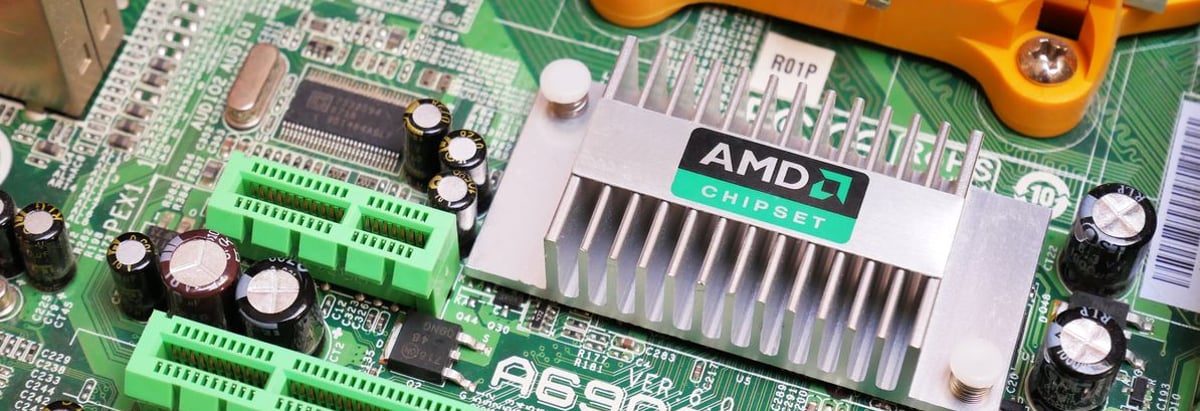- United States
- /
- Semiconductors
- /
- NasdaqGS:AMD
Advanced Micro Devices (NASDAQ:AMD) Seems To Use Debt Rather Sparingly

David Iben put it well when he said, 'Volatility is not a risk we care about. What we care about is avoiding the permanent loss of capital.' So it seems the smart money knows that debt - which is usually involved in bankruptcies - is a very important factor, when you assess how risky a company is. As with many other companies Advanced Micro Devices, Inc. (NASDAQ:AMD) makes use of debt. But the more important question is: how much risk is that debt creating?
When Is Debt A Problem?
Debt assists a business until the business has trouble paying it off, either with new capital or with free cash flow. Ultimately, if the company can't fulfill its legal obligations to repay debt, shareholders could walk away with nothing. While that is not too common, we often do see indebted companies permanently diluting shareholders because lenders force them to raise capital at a distressed price. Of course, plenty of companies use debt to fund growth, without any negative consequences. When we examine debt levels, we first consider both cash and debt levels, together.
Check out our latest analysis for Advanced Micro Devices
How Much Debt Does Advanced Micro Devices Carry?
The chart below, which you can click on for greater detail, shows that Advanced Micro Devices had US$2.47b in debt in March 2024; about the same as the year before. However, it does have US$6.04b in cash offsetting this, leading to net cash of US$3.57b.

How Strong Is Advanced Micro Devices' Balance Sheet?
According to the last reported balance sheet, Advanced Micro Devices had liabilities of US$6.47b due within 12 months, and liabilities of US$5.22b due beyond 12 months. On the other hand, it had cash of US$6.04b and US$5.07b worth of receivables due within a year. So its liabilities outweigh the sum of its cash and (near-term) receivables by US$593.0m.
This state of affairs indicates that Advanced Micro Devices' balance sheet looks quite solid, as its total liabilities are just about equal to its liquid assets. So it's very unlikely that the US$226.3b company is short on cash, but still worth keeping an eye on the balance sheet. Despite its noteworthy liabilities, Advanced Micro Devices boasts net cash, so it's fair to say it does not have a heavy debt load!
Better yet, Advanced Micro Devices grew its EBIT by 203% last year, which is an impressive improvement. If maintained that growth will make the debt even more manageable in the years ahead. The balance sheet is clearly the area to focus on when you are analysing debt. But ultimately the future profitability of the business will decide if Advanced Micro Devices can strengthen its balance sheet over time. So if you want to see what the professionals think, you might find this free report on analyst profit forecasts to be interesting.
But our final consideration is also important, because a company cannot pay debt with paper profits; it needs cold hard cash. While Advanced Micro Devices has net cash on its balance sheet, it's still worth taking a look at its ability to convert earnings before interest and tax (EBIT) to free cash flow, to help us understand how quickly it is building (or eroding) that cash balance. Happily for any shareholders, Advanced Micro Devices actually produced more free cash flow than EBIT over the last three years. That sort of strong cash generation warms our hearts like a puppy in a bumblebee suit.
Summing Up
We could understand if investors are concerned about Advanced Micro Devices's liabilities, but we can be reassured by the fact it has has net cash of US$3.57b. The cherry on top was that in converted 149% of that EBIT to free cash flow, bringing in US$1.2b. So is Advanced Micro Devices's debt a risk? It doesn't seem so to us. We'd be very excited to see if Advanced Micro Devices insiders have been snapping up shares. If you are too, then click on this link right now to take a (free) peek at our list of reported insider transactions.
If you're interested in investing in businesses that can grow profits without the burden of debt, then check out this free list of growing businesses that have net cash on the balance sheet.
New: Manage All Your Stock Portfolios in One Place
We've created the ultimate portfolio companion for stock investors, and it's free.
• Connect an unlimited number of Portfolios and see your total in one currency
• Be alerted to new Warning Signs or Risks via email or mobile
• Track the Fair Value of your stocks
Have feedback on this article? Concerned about the content? Get in touch with us directly. Alternatively, email editorial-team (at) simplywallst.com.
This article by Simply Wall St is general in nature. We provide commentary based on historical data and analyst forecasts only using an unbiased methodology and our articles are not intended to be financial advice. It does not constitute a recommendation to buy or sell any stock, and does not take account of your objectives, or your financial situation. We aim to bring you long-term focused analysis driven by fundamental data. Note that our analysis may not factor in the latest price-sensitive company announcements or qualitative material. Simply Wall St has no position in any stocks mentioned.
Have feedback on this article? Concerned about the content? Get in touch with us directly. Alternatively, email editorial-team@simplywallst.com
About NasdaqGS:AMD
Flawless balance sheet with reasonable growth potential.
Similar Companies
Market Insights
Community Narratives


